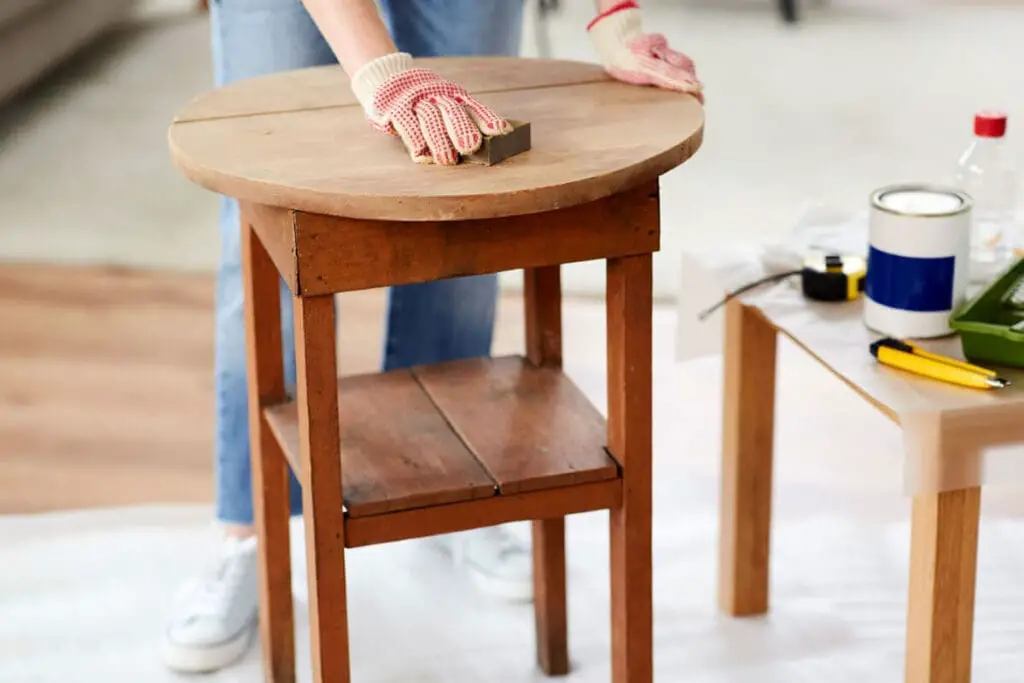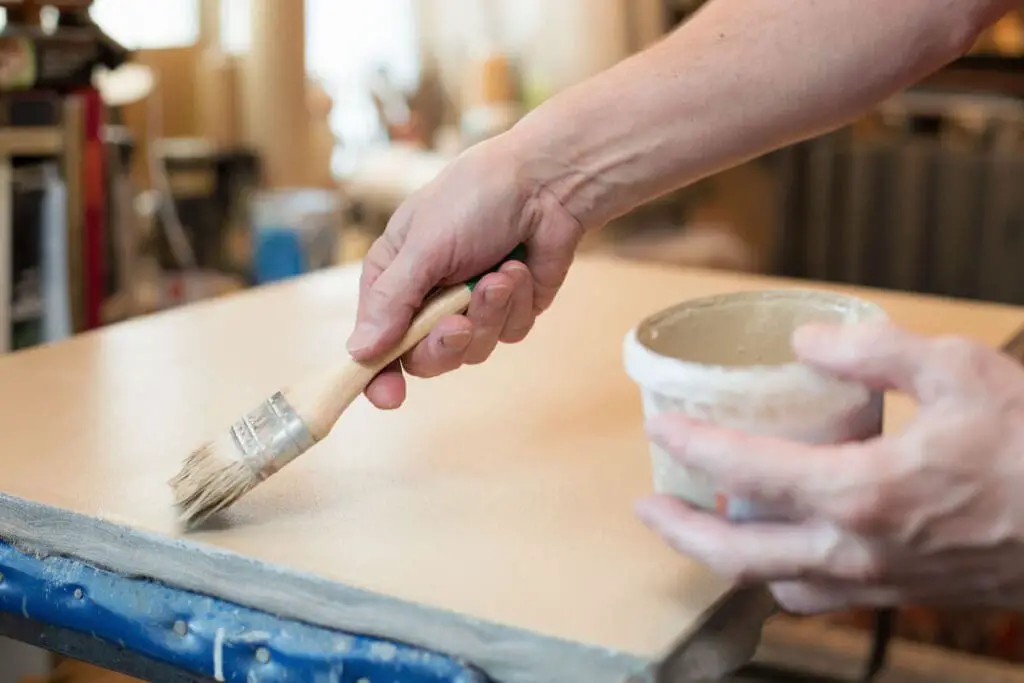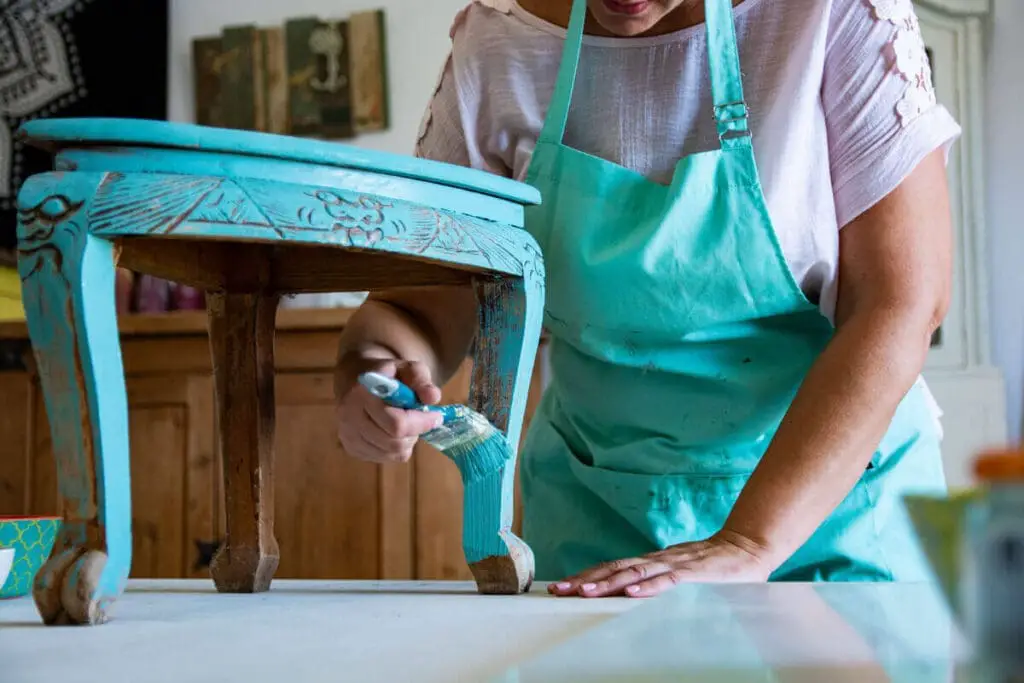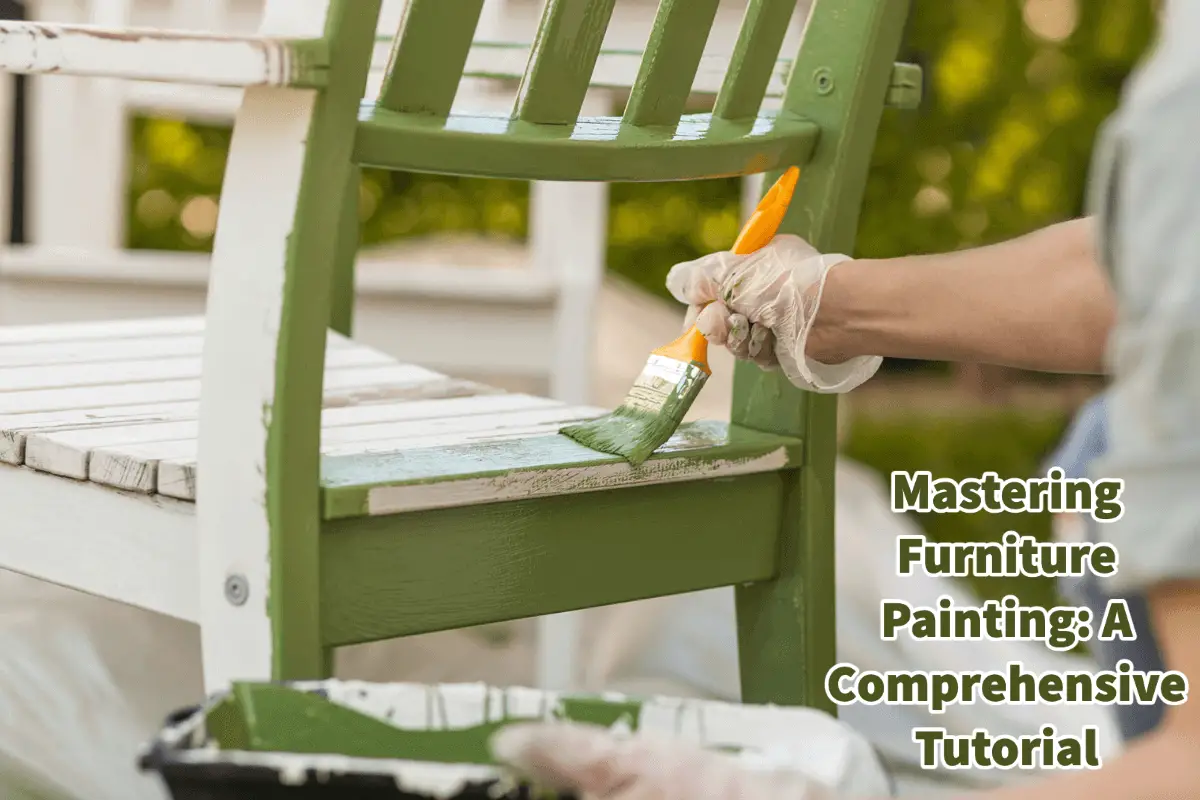Revitalizing old furniture through painting or tailoring a new acquisition to blend into your space seamlessly can be immensely satisfying.
However, as with many DIY endeavors, the outcome’s success largely hinges on the groundwork that precedes the core activity. In this guide, we’ll meticulously walk through every phase of the furniture painting journey to help you attain a flawless, expert-grade finish each time.
Table of Contents
How To Paint Furniture: A Detailed Step-by-Step Guide
Painting furniture is a beautiful way to breathe new life into an old piece or customize a new purchase to fit perfectly within your space. But like many DIY projects, the preparation before the main task often determines the result.
In this guide, we’ll dive deep into each step of the furniture painting process, ensuring you achieve a professional-looking finish every time.
1. Prepping The Furniture
The importance of preparation: Before embarking on your painting journey, it’s essential to understand the crucial role of preparation. Adequately prepping your furniture ensures the paint adheres well and lasts longer.
Additionally, well-prepped furniture provides a smooth surface, giving you a more polished final look.
2. Sanding
Sanding is one of the prep process’s first and most critical steps.

Why Sand?
Sanding helps remove any existing finish or gloss from your furniture, which can prevent new paint from sticking properly. It also helps smooth imperfections or rough patches, ensuring a more even paint application.
How To Sand:
- Start with medium-grit sandpaper (e.g., 120-grit) to tackle rough or uneven areas.
- Sand in the direction of the wood grain to avoid scratching the surface.
- Once the significant imperfections have been addressed, switch to finer grit (e.g., 220-grit) for a smoother finish.
- Wear a dust mask and work in a well-ventilated area to protect yourself from dust.
3. Cleaning The Furniture
After sanding, it’s essential to clean the furniture thoroughly.
Why clean? Dust and debris from sanding can get trapped under the paint, leading to an uneven finish or causing the paint to peel prematurely.
How To Clean:
- Use a tack cloth or a damp rag to wipe away any dust or debris from the surface.
- If the furniture is filthy, you can use mild dish soap and water to clean it. Ensure the furniture is completely dry before moving on to the next step.
4. Priming
Priming acts as a bridge between the furniture and your paint, ensuring the paint adheres properly.

How To Prime:
- Choose a primer appropriate for your furniture’s material (wood, metal, etc.).
- Apply the primer using a brush or roller to cover every furniture part.
- Allow the primer to dry thoroughly, as the product’s label recommends.
5. Sanding Between Coats
For an ultra-smooth finish, it’s beneficial to sand between each coat of paint or primer.

How To Do It:
- Once your primer or paint layer has completely dried, lightly sand the surface using fine-grit sandpaper (e.g., 320-grit or higher).
- This process helps to smooth out any brush strokes or imperfections from the previous coat.
- Use a tack cloth or damp rag to clean off dust after sanding.
6. Spray Painting
Spray paint provides a smooth, even coat, which can be especially handy for intricate or detailed furniture pieces.

How To Spray Paint:
- Ensure you’re in a well-ventilated area, preferably outdoors.
- Shake the spray paint can thoroughly before use.
- Hold the can about 10-12 inches from the surface and apply steadily, sweepingly.
- Apply multiple thin coats instead of one thick coat for the best results.
- Depending on your desired look, you may need to sand between coats to achieve an ultra-smooth finish.
7. Hand Finishing
Sometimes, the best results come from adding personal touches by hand.

Why Hand Finishes?
Hand finishing can give your piece character, depth, and a unique quality that’s hard to achieve with spray paint alone.
How To Hand Finish:
- Depending on the look you’re going for, you can use brushes, rags, or sponges to apply paint or stain.
- Techniques like dry brushing, distressing, or applying a glaze can add depth and texture to your furniture piece.
- Always ensure that each layer is dry before applying the next, and remember to protect your finished piece with a sealer or topcoat.
Painting furniture can be rewarding, transforming outdated or tired pieces into beautiful statement items. The key to success lies in the preparation.
By taking the time to prep, sand, clean, and carefully apply each coat, you’ll be rewarded with a professional finish that stands the test of time. Happy painting!
Find out more about how Mondoro can help you create, develop, and manufacture excellent home decor and furniture products – don’t hesitate to contact me, Anita. Check out my email by clicking here or become a part of our community and join our newsletter by clicking here.
Mondoro gives out a FREE Lookbook to anyone interested. You can receive a copy of our latest Lookbook by clicking here.
Listen to our Podcast called Global Trade Gal. You can find it on all major podcast platforms. Try out listening to one of our podcasts by clicking here.
Subscribe to our Mondoro Company Limited YouTube Channel with great videos and information by clicking here.
Related Content
Importance To Follow Furniture Assembly Instructions
When most individuals receive a KD (Knock Down) furniture item that requires assembly, it usually comes with an assembly manual. Some might disregard these instructions, not realizing their significance, but this document is vital. Below are ten reasons illustrating the importance of furniture assembly instructions.
You can learn more by reading our blog, Importance To Follow Furniture Assembly Instructions, by clicking here.
Why Is It So Hard To Find Solid Wood Furniture Manufacturers?
Locating trustworthy solid wood furniture manufacturers can be an intricate endeavor for retailers and wholesalers. The task’s complexity is rooted in many factors related to solid wood furniture’s production and manufacturing procedures. Read on as we explore the complex task of the search for solid wood furniture manufacturers and how Mondoro can help you.
You can read our blog about Why Is It So Hard To Find Solid Wood Furniture Manufacturers? by clicking here.
Is Solid Wood Furniture Expensive? 3 Factors To Consider
Three main factors can significantly influence the furniture price if you choose solid wood. These factors include the type of wood used, the size of the furniture piece, and the construction techniques employed, all of which play a crucial role in determining the final cost. Read on as we explore each of these.
You can learn more by reading our blog, Is Solid Wood Furniture Expensive? 3 Factors To Consider by clicking here.


